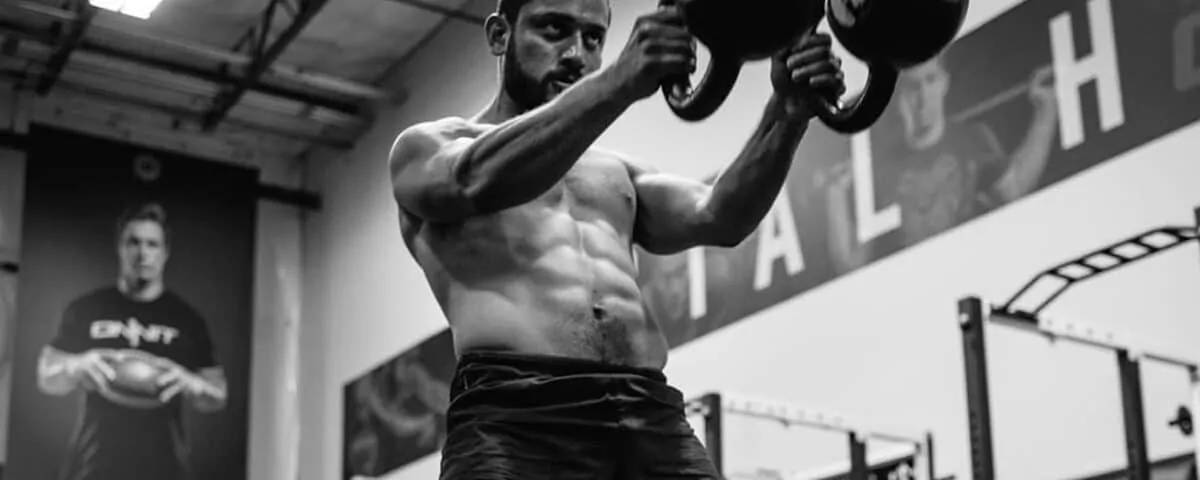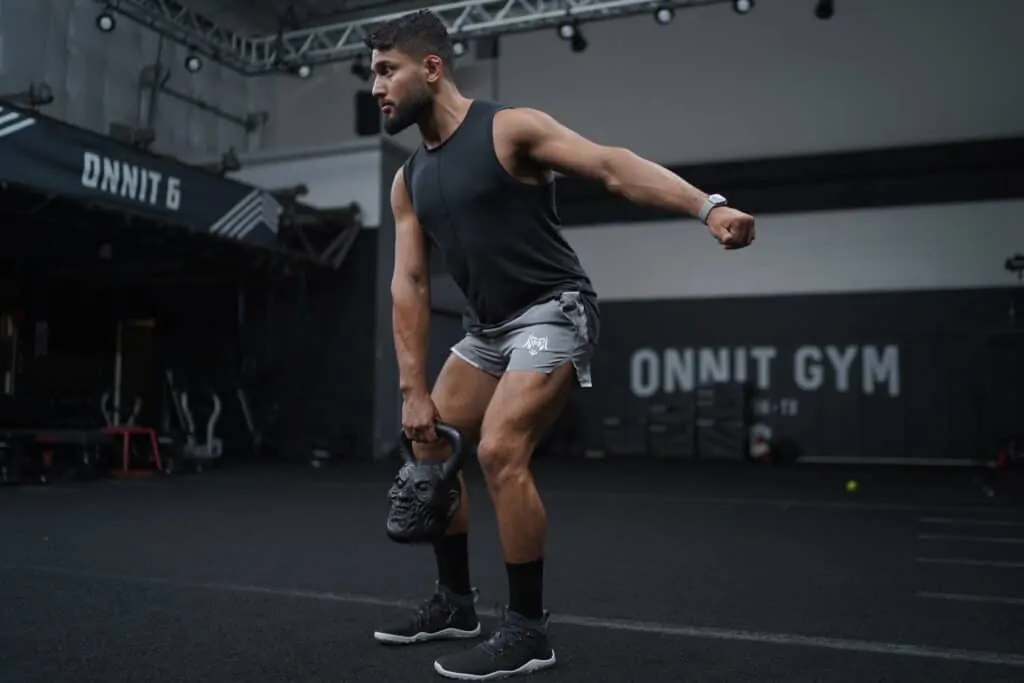
Cardio. Strength. Mobility. Mental power.
More specifically: working the hip hinge, targeted core work, and improved overall athleticism.
These are the results of kettlebell swings.
Being able to achieve these results simultaneously from a single exercise is remarkable, and makes Kettlebell Swings one of the most effective and efficient exercises there is.
Powerful stuff there, savages.
One of the most popular questions regarding kettlebell swings, however, is how to execute the perfect swing. Form is extremely important not only for reaping every benefit this movement has to offer, but also for preventing injuries.
While there are two different types of kettlebell swings, the American, and the Russian, below is the basic breakdown of the steps how to perform a proper KB Swing:
- Place a kettlebell on the ground between your feet
- Hinge at hips, with your belly engaged, back flat and hips pressing back, and place overhand grip on the kettlebell
- Press down through your feet and extend through your hips to lift kettlebell off the ground and forward
- With straight arms, swing kettlebell to shoulder height (we’ll discuss the American vs. Russian version of this shortly), keeping shoulders relaxed and scapula engaged
- Your glutes will engage as you thrust forward, generating the power of this swing from your hips, not your arms or shoulders
- With control, return the KB to starting position
Kettlebell Swing Form: Why It Matters

As mentioned earlier, the kettlebell swing is not worth the effort if you aren’t performing it correctly. If you don’t swing with great form, you put yourself at risk to injure your knees, lower back, shoulders and neck.
In particular, it’s extremely important to pay attention to your hip form during swings. Hip strength generates the power of a kettlebell swing, meaning hip extension is necessary. But, without a holistically strong and engaged core – abs, hips and low back – you can press too far forward in the hips, crunching through your low back to cause pain and damage.
Pulling your shoulder blades down and toward each other to engage them, is also critical as much in a kettlebell swing as in any other power move. When you don’t draw your scapula together, you may shrug your shoulders, cramping your neck. Or, you can end up swinging the KB too high, creating an impingement in your shoulders.
Different Types of Kettlebell Swings

Now that you know why proper form is so important during the swing, let’s dive into the difference between the two famous versions: The Russian Kettlebell Swing and the American Kettlebell Swing. They are almost identical, except for the top position.
In a Russian KB Swing, your movement ends when the kettlebell gets to shoulder level at the highest. In the American version of the movement, you take the KB into a full overhead extension, which requires more shoulder mobility than the Russian Swing. This also means you need to use a lighter kettlebell to prevent the aforementioned shoulder injuries, which also lessens the overall force production.
While there is no real winner over which version is better, the American version offers little more than the Russian – some upper back work, rounding out the Kettlebell Swing’s ability to be called a truly “full-body” movement. However, the list of potential issues the American version offers, including the previously mentioned shoulder damage and lightened workload, means sticking with the Russian is a good idea, at least until you’re secure in your shoulders’ range of motion and your ability to perform the swing properly.
Of course, because I’ve got KB Swings pretty down pat (and because I know how much value they add), I’m not shy to include them in almost any workout, including one of my favorite, full-body combos that I crushed with Michael Vazquez and Jay Maryniak. Pure fire!
This is great to watch to notice great form in action and at full speed:
You’ll perform a total of five sets, 12 reps of movement, resting 15 to 30 seconds between each exercise and each set.
Switch Push-Up – Reach
- Get into push-up position with belly on ground and a kettlebell laying down under your right hand
- Press through your palms to explode the top of push-up, while moving your body to the right so you land with the kettlebell under your left hand
- Take a push-up with kettlebell under your left hand; at the top of the push-up, superman your right arm forward then return to bottom of push-up
- Press through your palms to explode the top of push-up, while moving your body to the left so you land with the kettlebell under your right hand
- Take a push-up with kettlebell under your right hand; at the top of the push-up, superman your left arm forward then return to bottom of push-up
- Repeat 6 reps on each side
Kettlebell Swing – Clean – Squat
- Using the Kettebell Swing technique listed above, perform Swing
- After returning bell to lowered position, use the same hip thrust to Clean the kettlebell to chest position
- Once you’ve stuck the Clean, Squat the kettlebell
- Return to Kettlebell Swing start position; repeat 12 times
Kneeling Two-Hand Curl – Tricep Extension
- Kneeling down, take overhand grip on kettlebell
- Curl kettlebell to chest high
- Use triceps to press kettlebell overhead
- Bend elbows to lower kettlebell behind head
- Extend triceps to lift kettlebell back overhead
- Lower kettlebell to chest, and then back to the ground
- Repeat
We all know practice makes perfect, so get in front of a mirror and practice your form until you feel comfortable completing a full workout!